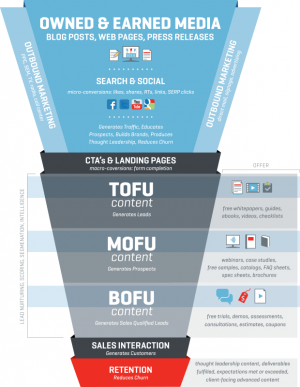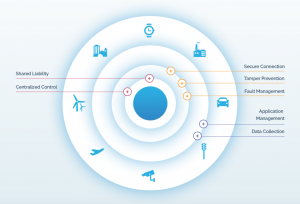
B2B Articles - May 03, 2017
IoT companies are no strangers to data. Because of this, they are the market leaders in data-driven technology. But what about using marketing data to drive growth? For many IoT companies, they ignore or underutilize marketing data entirely.
However, the next big opportunity for IoT marketing is indeed data.
One of the top four priorities for 700+ CMOs is to inject data-driven insights into every marketing decision. – IBM Survey
Why is data so important for the IoT marketer? Because buyers for IoT present specific challenges.
Overall, buyers are intrigued by IoT adoption — but they also have concerns. Companies must, then, gain a strong understanding of their buyers through marketing data. And they must use that data to segment buyer segments, present the right content, and measure the efficacy of their online buying journey.
IoT buyers are unique, because they have a range of technical understanding.
According to FC Business Intelligence, 55% of respondents in the insurance industry say that “understanding the technology” is the top challenge to adopting IoT solutions, followed by legacy systems (39%) and security (33%).
For example, some buyers are technical and well-versed in IoT solutions and stack models. But other buyers — particularly executives — may be non-technical in their decision making.
 Since both the technical and non-technical buyers have a stake in buying decisions, IoT marketers must appeal to both audiences. And marketing data can help segment these buyers — for example, by gathering information in form fields.
Since both the technical and non-technical buyers have a stake in buying decisions, IoT marketers must appeal to both audiences. And marketing data can help segment these buyers — for example, by gathering information in form fields.
Why is segmentation important? Because each buyer segment needs relevant content — white papers, data visuals, and videos for education. And segmenting will also allow the IoT marketer to use relevant language and key terms for the segment, based on their familiarity.
According to MailChimp, segmented campaigns receive over 100% more clicks than non-segmented emails.
Content can also help concerns on security and integrations with legacy systems. For example, imagine a white paper: "The Safety of [Product Category]: What Does the Data Say?" or "The IoT Stack: A Complete Visualization."
This type of content could appeal to either the technical or non-technical buyer, depending on the language and depth of topics covered.
In an FC Business Intelligence survey, 33% of survey respondents say that security slows their IoT adoption.
Therefore, IoT marketers must be nurturing leads with encouraging, educational content. In fact, you may not have a sales call to explain these concerns. More and more, the "zero moment of truth" is occurring online, long before a sales call.
But where in the customer lifecycle is education needed? And are there spots in the nurturing journey that buyers "fall off" or lose confidence?
 Image source: MOZ.com from their YouMoz blog.
Image source: MOZ.com from their YouMoz blog.
Only 30% of CMOs say with full confidence that their company has a full grasp of where the customer lifecycle loses leads. And only 38% of respondents strongly agree that they are leveraging analytics to understand where trust is being eroded in the lifecycle.
But marketing analytics can give your IoT company great insight on your buying lifecycle. For example, by tracking the conversions of leads through the lifecycle, you can measure health of your nurturing strategy.
IoT marketers can use analytics to discover where the trust is broken. Furthermore, they can measure if a brand is really encouraging prospects with its nurture sequence. Then, IoT teams can prioritize more education on security protocols and risk — at the right stages in the purchase cycle.
Buyers need continual touch points when it comes to IoT purchases. As sales cycles grow, IoT marketers must create more touch points during the marketing and sales process. Segmentation and automation are key to creating relevant campaigns.
When sales and marketing teams work together, companies see 36% higher customer retention and 38% higher sales win rates, according to the TAS Group.
Therefore, IoT teams must share marketing data with the sales process. As marketers create content, they should inform sales teams about which content pieces are performing well, and which are not.
This feedback loop goes the other way, too: Sales reps should report back to marketers. Specifically, are there any unanswered concerns that the marketing team can address earlier with nurturing? For example, are your IoT buyers concerned about one specific integration? The marketing team could create a guide or email series about that topic early in the process.
Data is the backbone for IoT systems. But buyers need data broken down simply in order to trust and understand it.
The buyer also wants assurance the data is accurate. Therefore, IoT marketers must be able to take relevant data and transform it into digestible content — think information graphics, engaging videos, and clear charts and graphs. Strong, professional visuals will go a long way to educate IoT buyers. Take this example from IoT Innovation:
 Internet of Things visualization, from https://internet-of-things-innovation.com/
Internet of Things visualization, from https://internet-of-things-innovation.com/
This means, however, that IoT marketers must have data analytics skills for their marketing campaigns.
Therefore, IoT companies must give marketers the tools and training they need to harness data and transform it for customer use. This should play into hiring — finding marketers who can use data, and react to the insights from a data-driven campaign.
Data is valuable for many reasons: It lets you enact growth hacking strategies, segment to your technical and non-technical IoT buyers, and visualize compelling content.
Sources
https://www.forbes.com/forbesinsights/ey_cmo_final/index.html
https://www.statista.com/statistics/486156/challenges-of-internet-of-things-adoption-insurance-companies-usa/
https://blog.hubspot.com/sales/stats-that-prove-the-power-of-smarketing-slideshare

Tel 212-993-7809
Ironpaper ®
10 East 33rd Street
6th Floor
New York, NY 10016
Map
New York Agency
B2B marketing
B2B Content
Demand generation agency
Digital Marketing
Account-Based Marketing
ABM for SaaS
ABM for energy
Demand generation campaigns
Industry marketing
Privacy Policy
First-party data marketing
SaaS marketing
SEO for B2B
IoT Marketing
B2B Marketing for IoT Companies
HubSpot Agency
B2B Product Marketing
B2B Software Marketing
IoT go-to-market strategy
IT Marketing
HubSpot for ABM
ABM for AI companies
Technology Marketing
Marketing for IT Companies
ABM Campaigns
B2B lead generation
B2B Marketing and Growth Agency.
Grow your B2B business boldly. Ironpaper is a B2B marketing agency. We build growth engines for marketing and sales success. We drive demand generation campaigns, ABM programs, B2B content, sales enablement, qualified leads, and B2B marketing efforts.